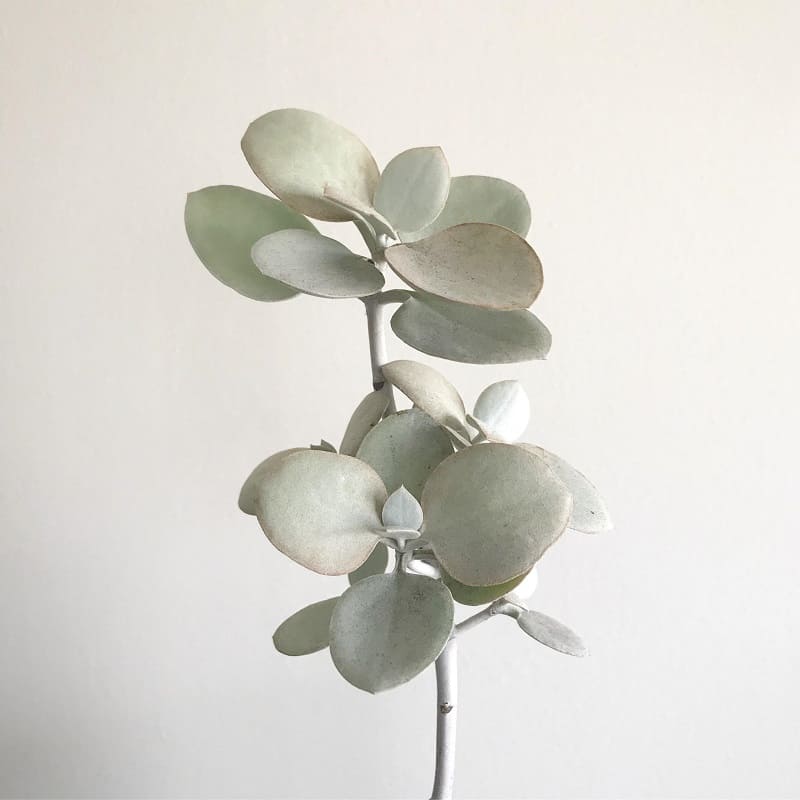Kalanchoe Bracteata is a small succulent native to southeastern Madagascar.
It can measure up to 3 feet (90 cm) tall, with woody stems and silver-gray leaves, which are soft and precious.
The flowers of this plant are red in branched terminal inflorescences.
Kalanchoe bracteata are not particularly difficult to grow.
It is not necessary, but some people reject the succulent after it blooms.
Simply cut off the flowering head, let the rest of the plants with reduced water, and resume normal care.
This plant blooms naturally in the spring.
You may like the Little Warty
Tips for growing the Kalanchoe Bracteata “Silver Teaspoon”
Illumination
It is important when you are going to acquire a plant or just grow it, that you know the type of seasons you have since otherwise the money would be spent in vain.
The kalanchoe bracteata need exposure to full sun and, thanks to their hairs, they resist sunstroke well.
Just take care of the plant in the summer of the midday sun, as it can cause serious burns to its leaves.
As for cold temperatures, temperatures below 8 ºC are not convenient, being its ideal winter temperature of about 10 ºC.
Temperature
The weather should always be warm for optimum growth.
In winter you must protect it from low temperatures.
The ideal temperature range for this plant is between 20 and 30 ° C. Temperatures below 15 ° C will cause foliage to fall or even plant death.
Substratum
The substrate must have perfect drainage and slightly rich in organic matter.
This should be a mixture of coarse sand, gravel, and some peat.
We will avoid planting it in the garden directly on the ground if the area is prone to frost.
Pot
You can mix universal cultivation substrate with perlite in equal parts, but if you live in an area where it usually rains regularly, or if you do not want to take too many risks, I advise you more to plant it on in another volcanic sand.
Garden
Grows in sandy, porous, well-drained soils.
If yours is not, make a hole of about 50 x 50cm, cover it with shading mesh and fill it with the substrates mentioned above.
Regardless of whether you are going to have it in a pot or the garden, the drainage of the soil is essential.
You may like: Crassula Tetragona
There is no resistance to waterlogging, and one way to avoid it is to make sure that the soil on which its roots grow is able to absorb water, but also to filter it as quickly as possible.
Watering Frequency
They are drought resistant plants that only need is moderate irrigation.
We should only water this species if the substrate is completely dry.
Irrigation should always be directly on the ground avoiding wetting the foliage.
In winter we must reduce the frequency of irrigation because water, in combination with low temperatures, can cause rotting of the plant by fungi.
Plagues and diseases
Be careful with the cochineals, they feed on the sap of the leaves.
Since the plant is rather small, you can easily remove them with a small brush soaked in pharmacy alcohol.
With snails in the rainy season, you have to be very careful with them, because they feed on all the parts of this plant.
Fungi appears when the humidity is high, rotting the roots and/or the leaves if they have been watered above frequently.
They are fought with fungicide, although prevention is ideal, not wetting leaves or stems and controlling irrigation.
Propagation
The easiest method to reproduce this species is by cuttings of leaves or stems from a branch.
We can also reproduce it from seeds that we must buy because it is rare for those we already have to flourish and without flowers, there are no seeds.
The cuttings should be removed from the mother plant with the help of a disinfected sharp object and let rest is cut for 24 hours, then they should be slightly buried (the area of the cut) in a substrate rich in thick sand and somewhat wet until they take root.
Fertilizer
Planted in the garden, the kalanchoe bracteata does not need a special subscriber.
During all the warm months of the year, it must be paid with liquid fertilizers for cacti and other succulents, following the instructions specified on the package.
You can also pay in autumn if there is no frost in your area.
Recall also that its slow growth does not require too much food.
Hope this article was helpful if you have any other question please let me know.
I will end by saying this a great succulent to have at home or in your garden. Just make sure to take care of her and everything will be fine.
